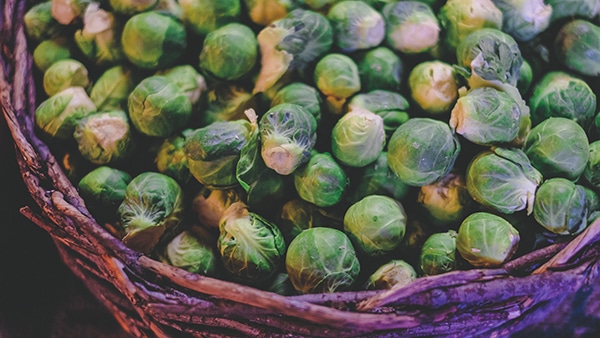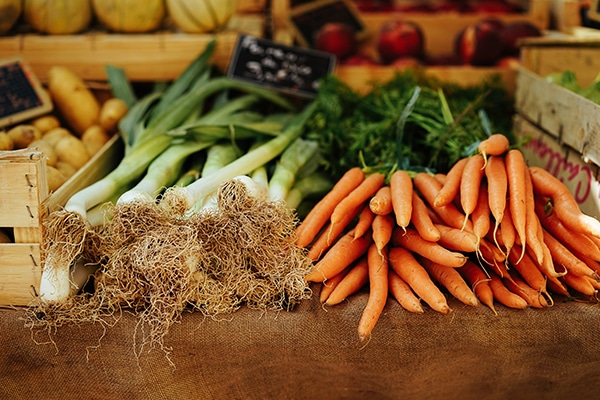Autumn Australia: 1 February 2020 to 31 May 2020
Now we’ve officially reached the cooler autumn months, those with a green thumb may want to start thinking about what to plant next.
Dropping temperatures and an increase in rain are just some of the things our gardens will experience as we move closer to winter. Many plants that thrive in the warmer weather may require protection or increased maintenance during this time.
While it may sound like gardening during the cool season is a chore, this is not the case. To take advantage of the seasonal changes, there are many hearty vegetables to grow that can be planted and thrive during Autumn.
Here are 7 vegetables ready to be planted in early Autumn so come winter-time, you’ll have an abundance of fresh produce on hand. You’ll find tips on how to plant them, care for them, what to plant with them and even ways to use these vegetables in our planting guide.
7 Vegetables to Plant in the Autumn Months
1. Beetroot.
If you buy most of your beetroot tinned and pre-sliced, then you are missing out on the flavour-packed treat you can grow in your own yard. Even the leaves from the beetroot are completely edible and make fantastic additions to salad or sandwiches.
You can also use beetroot as a natural dye or flavouring for things such as dips and cakes.
Where to plant beetroot:
Plant your beetroot in a medium-rich soil, sowing your seeds at least 10cm apart and a few centimeters deep. You can plant the seeds in a raised garden bed or planter.
Sunlight requirements:
Beetroot likes to be planted in full sun, but be careful as high temperatures can burn the leaves.
How to maintain beetroot plants:
Give your plants a drink when the topsoil has become dry. Soil that is too wet can cause root rot, while dry soil can cause the plant tubers to dry out.
Companion plants to beetroot:
Many leafy greens such as lettuce, Swiss chard and kale are great companion plants for beetroots. As beetroot plants grow so deep, lettuce is a great pairing option as its shallow roots will not interfere with the roots of the beetroot, and can also help protect the plant from weeds and other pests.

2. Brussel sprouts.
Brussel sprouts are full of fibre, protein and vitamins. Despite this, they do get wrongly labelled as a gross or poor tasting vegetable, which is not the case. Roasted, boiled or fried, they are delicious and easy to grow, making them the perfect vegetable to plant in autumn.
Where to plant brussel sprouts:
If grown from seeds, they should first be planted into seed trays or smaller pots and can be transferred to the garden once established.
Sunlight requirements:
Brussel sprouts do require sunlight, but can tolerate some shade.
How to maintain brussel sprouts plants:
Keeping your soil moist and well fertilised is the best way to look after your brussel sprout plants. Once they have begun to grow, you’ll need to stake them to keep them growing upright.
Companion plants to brussel sprouts:
You can plant your brussel sprouts amongst other vegetables like lettuce, beetroots, carrots, sweet peas, broad beans and onions.

3. Cauliflower.
One of the most versatile vegetables on the list, Cauliflower can, and has been, turned into almost every food you can think of. Cauliflower based pizza dough, rice and mash are just some of the ways to turn this vegetable into a great meal, however the florets are just as delicious roasted or boiled.
Where to plant cauliflower:
If you plant cauliflower now, you’ll find yourself with mature vegetables in about two months ready to be picked. Make sure to begin growing in smaller individual seedling trays, and then you can transfer to your garden or vegetable patch after a few weeks. Ensure plenty of space is given between each cauliflower plant when transferred, so they have room to grow.
Sunlight requirements:
Cauliflowers love to be planted in full sunlight. Too much shade can inhibit their growth.
How to maintain cauliflower plants:
Keep your soil moist and with a PH of around 6.5. Cauliflowers will benefit from mulching and weekly fertilising so that they receive sufficient nutrients.
Companion plants to cauliflower:
The large outer leaves will protect the cauliflower plant from pests and frost and can also help protect companion plants. When it is time to transfer your plant, they can be placed near vegetables such as corn, english spinach, radishes and broccoli.

4. Fennel.
While traditionally apples are considered to be the perfect pairing for pork dishes, fennel is quickly becoming a popular ingredient to use instead. Fennel is great for digestion and is anti-inflammatory, so it has traditionally been used medicinally. It is also an incredibly versatile vegetable with a strong anise flavour. The leaves are great as garnishes or additions to salads and other savoury dishes.
Where to plant fennel:
If growing fennel from seeds, germinate the seeds by soaking them in water for a few days. Once they have begun to sprout, they are ready to plant. Sow your seeds around 20-30 cm apart so they have enough room to grow.
Fennel can be planted in the garden, pots or a vegetable bed. This plant is not picky when it comes to soil type, and can happily grow in most gardens, and is ideally planted in autumn.
Sunlight requirements:
Fennel does prefer some sunlight during the day, but can withstand shady positions in your garden.
How to maintain fennel plants:
Like most bulb vegetables, they like to be kept moist, but not soaked or they can risk becoming waterlogged or rotting at the roots.
Companion plants to fennel:
Unfortunately, fennel is often considered an enemy to other vegetables in the garden. It can get along with herbs such as dill, but is best grown by itself as it can invade the roots and space of other plants.

5. Garlic.
If you are the kind of cook that sees a recipe that calls for 1 clove of garlic and uses 4 instead, then it’s time to start growing your own.
Not only is garlic the best ingredient to cook with and perfect in almost any dish (in this writer’s biased opinion), but it’s packed full of health benefits, such as:
- Helps boost your immunity.
- Has anti-inflammatory properties.
- Thought to help with hair growth and clear your skin.
Where to plant garlic:
Make sure to plant your garlic bulbs in a sunny position during the autumn months. Garlic grows best in light soil that has good drainage and can be planted directly into the garden, or in small pots.
Ensure to keep the bulbs about 10cm apart to give the roots ample room.
Sunlight requirements:
Garlic plants need plenty of sunlight during the day.
How to maintain garlic plants:
Even though it’s best to plant garlic in Autumn, place a thick layer of mulch over your plants to protect them from frost and cold temperatures.
Too much water can rot the plants roots, so ensure to only give them a drink when the topsoil has become dry.
Companion plants to garlic:
You can plant garlic amongst many plants, vegetables or herbs and they will grow happily. However, it is recommended to not plant garlic close to strawberries, peas and parsley as it can impact their growth.

6. Kale.
Kale is a popular leafy green that has burst onto the scene in recent years as a superfood. Nutrient dense and loaded with antioxidants, kale is a great substitute for lettuce and spinach.
While you can commonly find the dark green variety in supermarkets, in your own garden you can grow many varieties, including purple kale.
Where to plant kale:
Kale is incredibly low-maintenance and easy to grow although can take up to two months to fully mature and be ready to harvest. Whether you choose to plant in a pot or in the garden, ensure the soil is well draining.
Sunlight requirements:
Kale loves sunlight, and receiving enough sun will result in a full and leafier mature yield.
How to maintain kale plants:
Kale roots grow quite shallow, so they are susceptible to frost or overheating. Give your kale a layer of mulch to protect the roots while they grow. As most of this vegetable grows above ground, it is susceptible to attacks from pests. Carefully maintain your plants by keeping it well watered each week and pairing it with the right companion plants for added protection.
Companion plants for kale:
Kale can happily grow alongside many vegetables such as celery, English spinach and onions, as well as herbs like sage and rosemary.

7. Spring onion.
Spring onion is the perfect garnish for many dishes, and is incredibly easy to grow. With your new abundance of spring onions, you can add them to stir frys, roll them up into rice paper rolls and they are also perfect sprinkled on top of a hearty roast vegetable soup.
Where to plant spring onion:
One of the great benefits of spring onions is they won’t take up much space in your garden, but you will be able to grow a lot of them. Keep them in a pot to save space or add them into your garden bed with other vegetables. You can grow spring onions from seeds or propagate them from bulbs.
Sunlight requirements:
Make sure to place your spring onion plants in a position where they can receive full sunlight.
How to maintain spring onion plants:
Like many other vegetables on this list, spring onions have a shallow root system so will need mulch to help control their temperature. Give them plenty of water and the soil should sit between 6–7 PH.
Companion plants for spring onion:
Members of the onion family are often planted with members of the cabbage family, such as kale, cabbage and broccoli.

Get your garden bed ready for winter.
Find supplies, seeds and advice from a local garden supply specialist on Localsearch.





